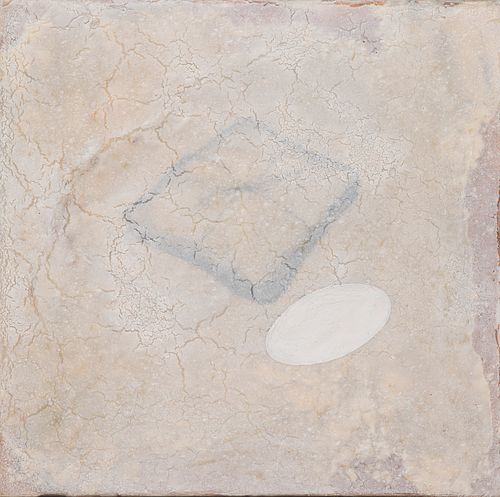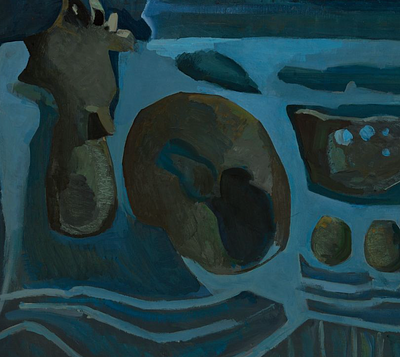JOSE MARIA SICILIA (Madrid, 1954). Untitled, 1989. Mixed media on canvas.
Lot 101
About Seller
Setdart Auction House
Carrer Aragó 346
Barcelona
Spain
Setdart Subastas was born in 2004 and is currently the first online art auction in Spain with solidity, prestige and reliability guaranteed by our more than 60,000 users. Setdart has a young, dynamic and enterprising team ready to successfully manage the purchase and sale of art works through custom...Read more
Categories
Estimate:
EUR€5,500 - EUR€6,500
$5,913.98 - $6,989.25
Absentee vs Live bid
Two ways to bid:
- Leave a max absentee bid and the platform will bid on your behalf up to your maximum bid during the live auction.
- Bid live during the auction and your bids will be submitted real-time to the auctioneer.
Bid Increments
| Price | Bid Increment |
|---|---|
| EUR€0 | EUR€10 |
| EUR€200 | EUR€25 |
| EUR€500 | EUR€50 |
| EUR€1,000 | EUR€100 |
| EUR€3,000 | EUR€200 |
| EUR€5,000 | EUR€500 |
| EUR€10,000 | EUR€1,000 |
| EUR€20,000 | EUR€2,000 |
| EUR€50,000 | EUR€5,000 |
About Auction
By Setdart Auction House
Jul 27, 2021
Set Reminder
2021-07-27 08:00:00
2021-07-27 08:00:00
America/New_York
Bidsquare
Bidsquare : CONTEMPORARY AND ACTUAL ART
https://www.bidsquare.com/auctions/setdart-auction-house/contemporary-and-actual-art-7261
Setdart Auction House sofia@setdart.com
Setdart Auction House sofia@setdart.com
- Lot Description
JOSE MARIA SICILIA (Madrid, 1954). Untitled, 1989. Mixed media on canvas. Attached certificate issued by the artist. Presents label of the Blum Helman Gallery (New York). Signed and dated on the back. Size: 50 x 50 cm; 77 x 76 cm (frame). This work is contextualized in the same year in which José María Sicilia was awarded the National Prize of Plastic Arts. In addition, during this date, at the end of the eighties, beginning of the nineties, an aesthetic change took place in his painting. It is at this time, when he begins to experiment with the color white, with the intention of creating a game of textures and volumes, deepened in the monochrome. This work is the reflection of this experimentation. An example of this is the mastery in the use of color, converging a whole chromatic range of the same tone, and the attention to the tactile values of the work, playing with crackle and material contrasts. It should be noted that the piece has a label from the famous Blum Helman Gallery in New York, with whom Sicilia began working in 1985, when he moved to New York. Sicilia began his studies at the School of Fine Arts in Madrid, although in 1980 he abandoned them and moved to live in Paris. Two years later he presented his first solo exhibition, in a style in line with the neo-expressionism then fashionable in Europe. Subsequently, it was the various objects of the everyday world that became the protagonists of his works. Vacuum cleaners, irons, scissors, buckets, etc., will be the center of a new language in which Sicilia will grant a greater and progressive importance to the treatment of textures. His work is organized in series on still lifes, landscapes and, the best known, on the Bastille and Aligre neighborhoods, where he himself lives and works. It was in the mid-eighties when his work reached a great national and international projection. In 1986 he presented at the Blum Helman Gallery in New York a group of works that showed a strong purification of the previous style, towards an abstract painting in which he progressively eliminated any formal reference. This new style is reflected in the series "Tulips" and "Flowers". In the nineties this reductionist aesthetic will affect the chromatic range, leaving the forms suggested by the reflection of light on the surface. A new material treatment of subtle poetic resonance, based on waxes that let floral themes slightly transparent, brings color back to an already fully consecrated work. José María Sicilia has been awarded the National Prize of Plastic Arts (1989), and is represented in the Reina Sofía Museum in Madrid, the MOMA and the Guggenheim in New York and the CAPC in Bordeaux, among many other centers.
- Shipping Info
-
In-house shipping available. Please inquire at admin@setdart.com.
-
- Buyer's Premium



 EUR
EUR CAD
CAD AUD
AUD GBP
GBP MXN
MXN HKD
HKD CNY
CNY MYR
MYR SEK
SEK SGD
SGD CHF
CHF THB
THB

















